Art, at a fundamental level, transmits the artists ideas about the world or their experience of the world. For thousands of years, women have been telling their stories through words, song, dance, and images, giving voice to individual women's experiences and enriching the tapestry of the human story. Below, you will find examples of New York women leaving their creative mark on the world.
OPRHP Sites & State and National Registers of Historic Places Listed Sites:
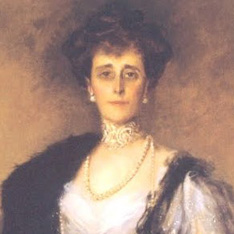
Staatsburgh State Historic Site, Staatsburgh: Ruth Livingston Mills (1896-1983), scion of the wealthy Hudson Valley Livingston family, was a dominating presence in the upper-class social circles of the Gilded Age, entertaining from her grand Staatsburgh home. New information regarding the mysterious artist who painted the portrait of Ruth Livingston Mills and a connection to the suffrage movement has recently been discovered, which you can read about in the following blog posts.

The Alice Austen House Museum , New York City: Alice Austen (1866-1952) was a lesbian photographer who documented evolving New York City,
immigrant populations, architecture, and relationships between Victorian women. Austen lived with her partner, Gertrude Tate, at a picturesque house on Staten Island, which is today's Alice Austen House Museum. Through the NYC LGBT Historic Sites Project's extensive research, the 1970 National Register nomination for the house was
amended to include the site's significance in LGBT history.
, New York City: Alice Austen (1866-1952) was a lesbian photographer who documented evolving New York City,
immigrant populations, architecture, and relationships between Victorian women. Austen lived with her partner, Gertrude Tate, at a picturesque house on Staten Island, which is today's Alice Austen House Museum. Through the NYC LGBT Historic Sites Project's extensive research, the 1970 National Register nomination for the house was
amended to include the site's significance in LGBT history.

Hotel Lafayette , Buffalo: Louise Blanchard Bethune (1856-1915):
, Buffalo: Louise Blanchard Bethune (1856-1915):
The Hotel Lafayette in Buffalo, New York, is nationally significant as the most important extant design of Louise Blanchard Bethune, the first woman in the United States to be officially recognized as a professional architect by the American Institute of Architects. Bethune's greatest impact was opening the doors in professional circles for other women to enter the field of architecture, leading by way of her commitment to the development of professional standards in the profession and the promotion of "Equal Remuneration for Equal Services" for women.
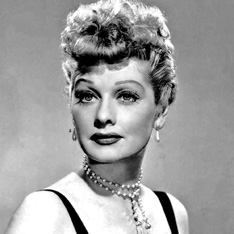
Lucy & Desi Museum, National Comedy Center Museum, Lake View Cemetery, Jamestown: Lucille Ball (1911-1989) was born in Jamestown and was one of the most famous comedians in America. She is buried in the National Register-listed Lake View Cemetery. The Lucy-Desi Museum and the National Comedy Center Museum preserve Ball's legacy and the history and craft of comedy.
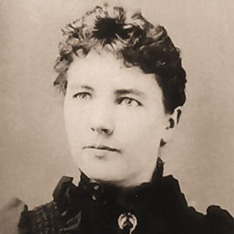
The Wilder Homestead , Malone: Laura Ingalls Wilder (1867-1957) was a writer best known for her Little House on the Prairie
childrens book series. The Wilder Homestead, established in the 1840s by James Mason Wilder, was the setting for Wilders 1933 historical novel, Farmer Boy. Based on her husband Almanzo Wilder's childhood, Farmer Boy tells the story of a year in the life of nine-year old Almanzo at his family farm in upstate
New York. The original Greek-Revival home was restored, and many of the outbuildings reconstructed, and today the site is operated as a museum, visitor center, research library and archives.
, Malone: Laura Ingalls Wilder (1867-1957) was a writer best known for her Little House on the Prairie
childrens book series. The Wilder Homestead, established in the 1840s by James Mason Wilder, was the setting for Wilders 1933 historical novel, Farmer Boy. Based on her husband Almanzo Wilder's childhood, Farmer Boy tells the story of a year in the life of nine-year old Almanzo at his family farm in upstate
New York. The original Greek-Revival home was restored, and many of the outbuildings reconstructed, and today the site is operated as a museum, visitor center, research library and archives.
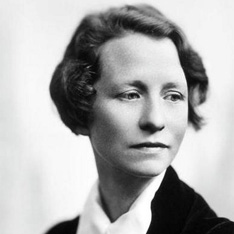
Edna St. Vincent Millay Society at Steepletop , Austerlitz:Edna St. Vincent Millay was a renowned figure of the Greenwich Village bohemian artist scene who rocketed
to prominence in her twenties, known for her subversive poetry as well as her unconventional and openly bisexual lifestyle. She was a social and political activist and the first woman ever to receive the Pulitzer Prize for Poetry. She spent the last 25 years of her life at Steepletop, her home in Austerlitz, NY which has been converted
into a museum.
, Austerlitz:Edna St. Vincent Millay was a renowned figure of the Greenwich Village bohemian artist scene who rocketed
to prominence in her twenties, known for her subversive poetry as well as her unconventional and openly bisexual lifestyle. She was a social and political activist and the first woman ever to receive the Pulitzer Prize for Poetry. She spent the last 25 years of her life at Steepletop, her home in Austerlitz, NY which has been converted
into a museum.
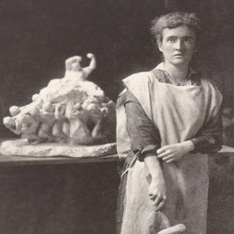
The Morgan State House, Albany: Alice Morgan Wright (1881-1975) was a modernist sculptor, a suffragist, and an animal welfare advocate. Wright helped found the New York State League of Women Voters and belonged to the New York State Women's Suffrage Party. The Morgan State House, Wright's lifelong home, currently functions as an inn and is located in the National Register listed Washington Park Historic District.
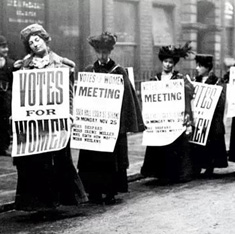
Oakwood Cemetary , Troy: Caroline Gilkey Rogers (1837-1899), a portrait painter originally from Camden, Maine, became central to the women's
suffrage movement after moving to Troy, New York in the 1880s. Some called her home the "Equal Rights Hotel" for hosting leading suffragists, including Matilda Joslyn Gage, Susan B. Anthony, Elizabeth Cady Stanton, and Mary Seymour Howell. Rogers' final resting place, Oakwood Cemetery, is open to the public for visitation.
, Troy: Caroline Gilkey Rogers (1837-1899), a portrait painter originally from Camden, Maine, became central to the women's
suffrage movement after moving to Troy, New York in the 1880s. Some called her home the "Equal Rights Hotel" for hosting leading suffragists, including Matilda Joslyn Gage, Susan B. Anthony, Elizabeth Cady Stanton, and Mary Seymour Howell. Rogers' final resting place, Oakwood Cemetery, is open to the public for visitation.

Augusta Savage House and Studio , Saugerties: Augusta Savage (1892-1962) was a sculptor who spent much of her life devoted to teaching art and advocating for
Black artists. Prior to moving to Saugerties in 1945, Savage was a distinguished artist of the Harlem Renaissance. Her work was notable for its realism and portrayal of the Black experience in America. The Augusta Savage House and Studio is listed on the National Register of Historic Places.
, Saugerties: Augusta Savage (1892-1962) was a sculptor who spent much of her life devoted to teaching art and advocating for
Black artists. Prior to moving to Saugerties in 1945, Savage was a distinguished artist of the Harlem Renaissance. Her work was notable for its realism and portrayal of the Black experience in America. The Augusta Savage House and Studio is listed on the National Register of Historic Places.
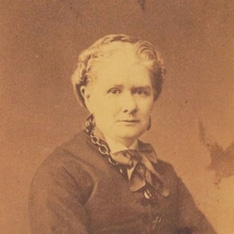
Emma Stebbins' "Angel of the Waters," New York City: Emma Stebbins (1815-1882) was a lesbian sculptor best known for her
"Angel of the Waters" statue that is located above the Bethesda Fountain in Central Park. The statue was the earliest public artwork made by a woman in New York City and is featured in the NYC LGBT Historic Sites Project.
New York City: Emma Stebbins (1815-1882) was a lesbian sculptor best known for her
"Angel of the Waters" statue that is located above the Bethesda Fountain in Central Park. The statue was the earliest public artwork made by a woman in New York City and is featured in the NYC LGBT Historic Sites Project.
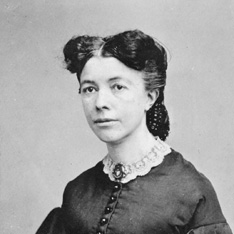
Mary Louise Booth Girlhood Home, Yaphank: Mary Louise Booth (1831-1889) was a writer, editor, and translator. Before serving as the first editor of Harper's Bazaar, Booth pursued vest-making, while writing on the side. She engaged with the women's suffrage movement as secretary for women's rights conventions in Saratoga (1855) and New York City (1860). The Mary Louise Booth Girlhood Home is on the National Register of Historic Places.
